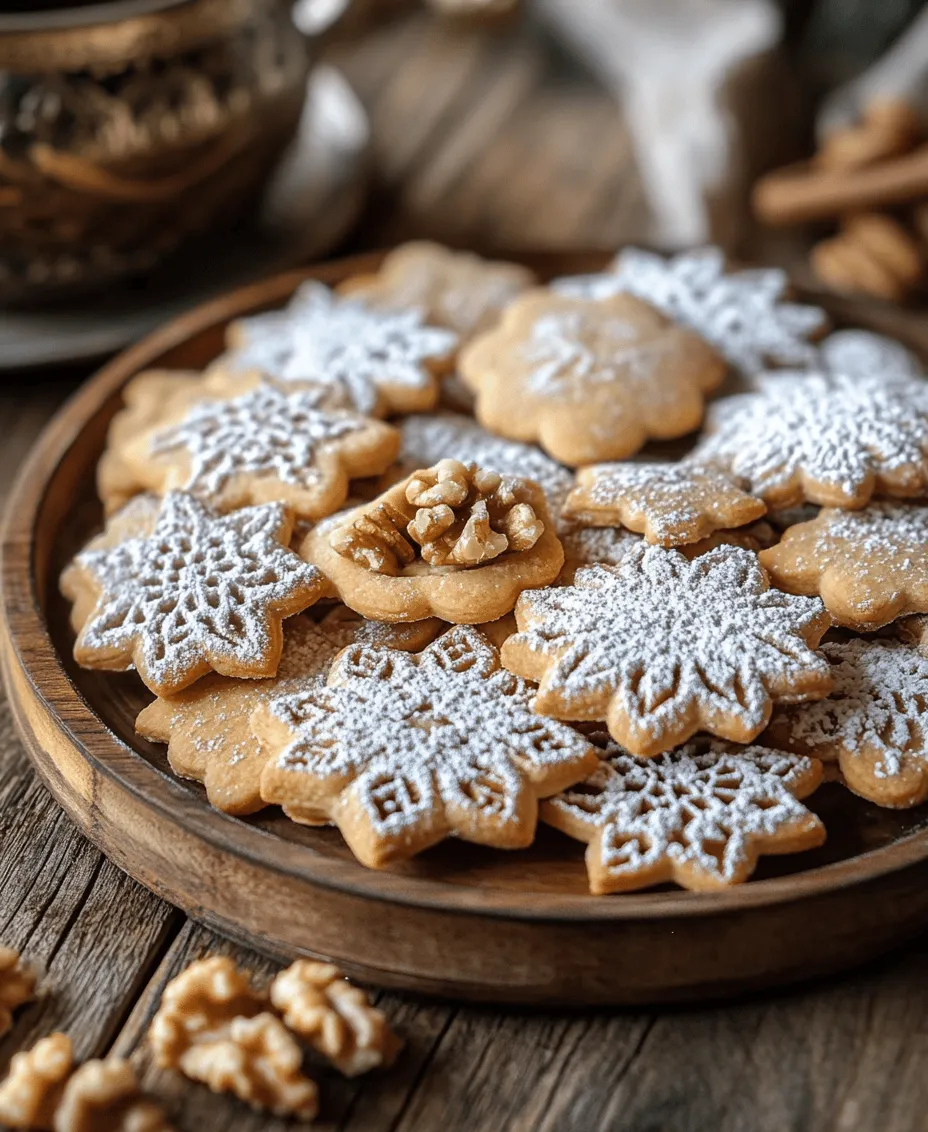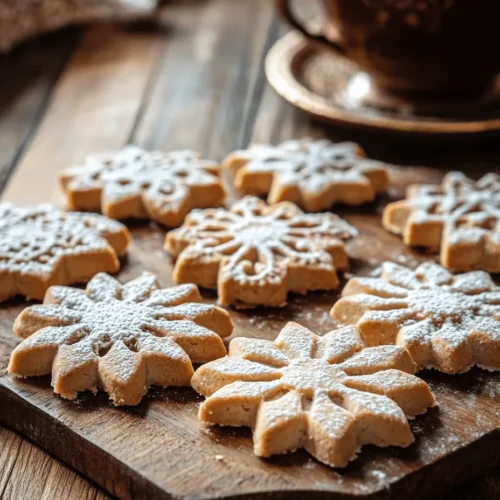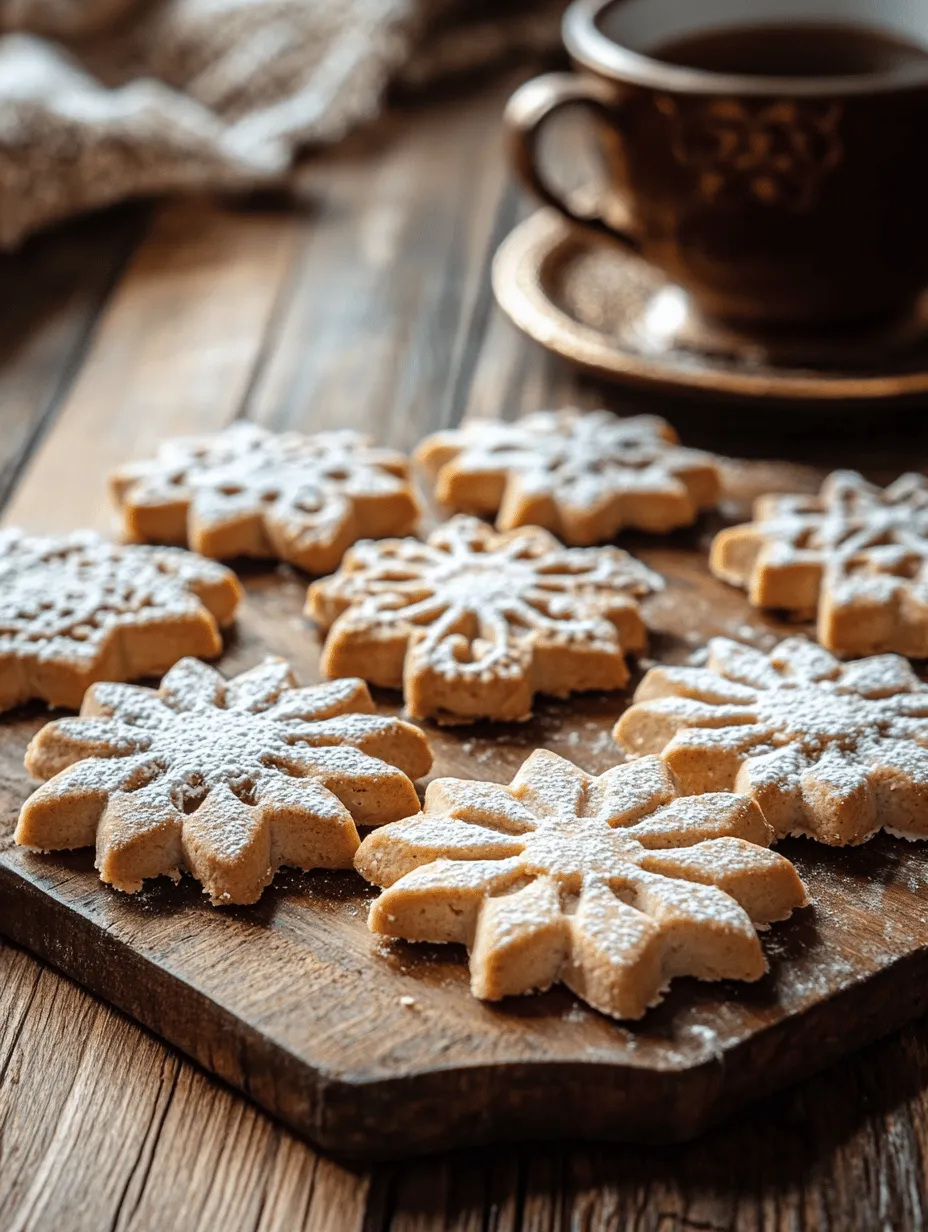Introduction
Kahk, the beloved Egyptian Eid cookies, are more than just a sweet treat; they are a symbol of celebration, family, and tradition. Each year during the Eid al-Fitr and Eid al-Adha festivals, families across Egypt prepare these delightful cookies, filling their homes with the warm, inviting aroma of freshly baked sweets. Kahk is often adorned with powdered sugar, showcasing their festive allure, and is traditionally filled with an array of delicious ingredients, making them a favorite among young and old alike.
The significance of Kahk transcends its delectable taste; it embodies the spirit of sharing and togetherness that is integral to Eid celebrations. Family members gather in the kitchen, often passing down cherished recipes and techniques from generation to generation, ensuring that the art of Kahk-making remains a cherished tradition. From the first mixing of ingredients to the final dusting of powdered sugar, the process of making Kahk is infused with joy and love, making these cookies a true celebration of Egyptian culture.
Understanding Kahk: A Traditional Egyptian Delight
Kahk has a rich historical background that dates back to ancient Egypt, where it was prepared for festivities and special occasions. Originally, these cookies were made in various shapes and sizes, often decorated with intricate designs, reflecting the artistry and creativity of the bakers. Over the centuries, Kahk has evolved, but its core essence remains the same—a delicious treat meant to be shared with loved ones.
In modern Egypt, Kahk is synonymous with Eid festivities. Families eagerly anticipate this time of year, not just for the religious significance but also for the joy of baking and indulging in these cookies. Traditionally, the preparation of Kahk brings families together. Mothers teach their daughters the secrets of achieving the perfect dough, while grandparents share stories of how Kahk was made in their youth. This communal aspect of baking Kahk reinforces familial bonds and creates lasting memories.
During Eid, it is customary for families to visit one another, and Kahk is often a centerpiece of these gatherings. Offering Kahk to guests is a gesture of hospitality and goodwill, reflecting the importance of generosity during the festive season. As you bite into a piece of Kahk, you are not just savoring a cookie; you are tasting a piece of history, culture, and love.
Essential Ingredients for Perfect Kahk
Creating the perfect Kahk requires a selection of essential ingredients, each playing a vital role in achieving the desired flavor and texture. Here’s a detailed look at the key components:
Unsalted Butter
Using softened unsalted butter is crucial for the right texture. It contributes to the cookies’ rich flavor and adds moisture, creating a tender crumb. The butter should be at room temperature to ensure it creams well with the sugar, resulting in a light and airy dough.
Vegetable Oil
Vegetable oil enhances the richness of the dough, providing a moist texture that pairs beautifully with the buttery goodness. The combination of butter and oil ensures that the cookies are not too dry, making each bite delightful.
Powdered Sugar
Powdered sugar is essential for both sweetness and texture. Unlike granulated sugar, which can create a gritty texture, powdered sugar dissolves easily, resulting in smooth, melt-in-your-mouth cookies. It is also often dusted on top of the finished cookies, giving them a festive, snowy appearance.
Vanilla Extract and Ground Mahlab
Vanilla extract adds a warm, aromatic flavor that complements the other ingredients beautifully. Ground mahlab, a spice made from the seeds of a specific cherry, is a traditional addition that infuses Kahk with a unique, slightly bitter almond flavor, enhancing the overall taste profile.
All-Purpose Flour
All-purpose flour serves as the foundation of the cookie dough. It provides structure and stability, allowing the cookies to hold their shape while baking. The right flour blend is essential to achieving the perfect texture, ensuring that the cookies are neither too crumbly nor too dense.
Milk
Milk is added to achieve the right dough consistency. It helps bind the ingredients together and contributes to the softness of the cookies. The amount of milk can be adjusted depending on the humidity and desired dough texture.
Chopped Nuts and Ground Cinnamon
Chopped nuts, such as walnuts or pistachios, are often used as a filling, adding a delightful crunch and nutty flavor to the cookies. Ground cinnamon lends warmth and a hint of spice, further enhancing the flavor of the filling and the overall cookie experience.
Pinch of Salt
A pinch of salt is vital for balancing sweetness and enhancing the flavors of the other ingredients. It elevates the overall taste of the Kahk, ensuring that each bite is perfectly balanced.
Step-by-Step Guide to Making Kahk
Preparing the Dough
To start your Kahk-making journey, gather all your ingredients and ensure they’re at room temperature. The first step in preparing the dough is to cream the softened unsalted butter and vegetable oil together until the mixture is light and fluffy. This process typically takes about 3-5 minutes using a hand mixer or stand mixer. The goal is to incorporate air into the fat, which will help create a tender cookie texture.
Once the butter and oil are well combined, gradually add the powdered sugar. Mixing this in slowly allows the sugar to dissolve properly into the fat, preventing a gritty texture. Continue to beat the mixture until it turns pale and fluffy, about 2-3 minutes. This is a crucial stage, as it lays the groundwork for the cookies’ texture.
Next, it’s time to incorporate the flavorings. Add the vanilla extract and ground mahlab to the creamed mixture, mixing until everything is well combined. The aroma of the vanilla and mahlab will fill your kitchen, setting the stage for the delicious cookies to come.
Combining Dry Ingredients
In a separate bowl, whisk together the all-purpose flour and a pinch of salt. Whisking the dry ingredients before incorporating them into the wet mixture ensures that the salt and flour are evenly distributed, preventing any clumps that could affect the texture of the cookies. This step is particularly important for achieving consistent results.
Once the dry ingredients are well mixed, gradually add them to the butter and sugar mixture. Mix on low speed until just combined. Be careful not to overmix, as this can lead to tough cookies. The dough should come together nicely, forming a soft, pliable ball. If the dough feels too sticky, you can add a bit more flour, but be cautious not to add too much, which could alter the texture.
Final Steps
After forming the dough, you’ll want to let it rest for a short period. This allows the gluten in the flour to relax, resulting in a more tender cookie. Cover the dough with plastic wrap and let it sit at room temperature for about 30 minutes. During this time, you can prepare your filling if you’re opting for nuts and cinnamon.
Once the dough has rested, you’ll be ready to shape and fill your Kahk, creating cookies that not only taste incredible but also reflect the love and tradition behind this time-honored recipe.

Tips on Incorporating Dry Ingredients with Wet Ingredients Effectively
When making Kahk, the method of combining dry and wet ingredients plays a crucial role in achieving the perfect texture. Start by sifting the dry ingredients—flour, sugar, baking powder, and spices—together in a large mixing bowl. Sifting not only eliminates lumps but also aerates the flour, which contributes to a lighter cookie.
Next, in a separate bowl, whisk together the wet ingredients, such as melted butter (or ghee) and any flavoring agents (like vanilla or rose water). The key to effectively mixing these components is to create a well in the center of the dry ingredients. Gradually pour the wet mixture into the well, using a spatula or wooden spoon to fold the dry ingredients into the wet. This technique minimizes gluten development, ensuring your cookies remain tender and crumbly rather than tough.
Shaping the Cookies
Once your dough is well combined, it’s time to shape the cookies. Begin by portioning out the dough using a cookie scoop or your hands. Each portion should weigh about 25 to 30 grams, which is approximately the size of a golf ball. Roll the portions into smooth balls and place them on a baking tray lined with parchment paper, leaving space between each cookie to allow for spreading during baking.
Next comes the filling process. Take a ball of dough and gently flatten it in your palm. Place a small amount of your desired filling—whether it’s nuts, dates, or a mix of both—in the center. Carefully fold the edges over the filling, encasing it completely. Roll the filled dough back into a ball, ensuring there are no cracks. This step is essential to prevent the filling from leaking out during baking.
Creating Designs
Traditionally, Kahk is not just a treat but a canvas for artistic expression. To create the iconic designs, you can use specialized molds called “Kahk molds” or simply a fork. Press the filled dough ball into the mold or gently press down with a fork to create decorative patterns. These designs hold cultural significance, representing the craftsmanship and heritage of Egyptian baking.
The motifs often found on Kahk symbolize various aspects of Egyptian culture, from floral patterns to geometric shapes, and they reflect the artistry involved in preparing these cookies. Engaging in this design process not only enhances the visual appeal but also connects bakers to centuries of tradition.
Baking the Cookies
For perfectly baked Kahk, preheat your oven to 180°C (350°F). Once the oven reaches the desired temperature, bake the cookies for about 15 to 20 minutes. Keep a close eye on them; the cookies are done when they turn a light golden color and begin to firm up. One of the best indicators that your Kahk is ready is the delightful aroma wafting through your kitchen. However, be cautious not to over-bake, as this can result in a dry cookie.
After baking, allow the cookies to rest on the baking sheet for a few minutes before transferring them to a wire rack to cool completely. This step is crucial for maintaining their delicate texture.
Cooling and Dusting
Proper cooling techniques play a vital role in the final texture of your Kahk. Allow the cookies to cool on the wire rack at room temperature, ensuring they don’t trap steam, which can lead to sogginess. Once cooled, it’s time to dust them generously with powdered sugar. This not only enhances the presentation but also adds a touch of sweetness that beautifully complements the dough’s rich flavor.
For variations in presentation, consider blending powdered sugar with ground nuts or spices like cinnamon for a unique twist. This simple addition can elevate your Kahk, making it even more delightful for your guests.
Serving Suggestions for Kahk
Kahk is typically enjoyed alongside traditional beverages during festive occasions. Pair your cookies with a warm cup of Egyptian tea or coffee. The bitterness of coffee and the aromatic qualities of tea balance the sweetness of the cookies, creating a harmonious flavor experience.
For gatherings or family celebrations, consider presenting your Kahk on decorative platters, perhaps garnished with fresh mint leaves or surrounded by dates and nuts. This not only enhances the visual appeal but also pays homage to the traditional way of sharing food in Egyptian culture.
Culturally, Kahk is more than just a treat; it symbolizes hospitality and community. Sharing Kahk with friends and family during Eid fosters a sense of unity and joy, reinforcing the bonds between loved ones.
Storing and Preserving Kahk
To maintain the freshness of your Kahk, it’s essential to store them properly. Allow the cookies to cool completely before placing them in an airtight container. This will prevent moisture from compromising their crisp texture. Stored in a cool, dry place, Kahk can last for up to two weeks without losing quality.
If you want to keep them for a longer period, consider freezing the cookies. Place them in a freezer-safe container, separated by parchment paper to prevent sticking. When ready to enjoy, simply thaw them at room temperature for a few hours before serving.
Kahk also makes a thoughtful gift during festive occasions. Pack them in decorative boxes or tins, perhaps accompanied by a handwritten note, and share the joy of these traditional cookies with your neighbors or friends.
Conclusion
Kahk holds a special place in the hearts of many Egyptians, especially during Eid celebrations. These cookies are not just a culinary delight; they are a symbol of tradition, family, and togetherness. By making Kahk at home, you can experience the joy of this beloved treat and share it with your loved ones.
The process of baking Kahk is a wonderful way to connect with Egyptian culture and preserve culinary traditions for future generations. As you create these delicious cookies, you are not only indulging in a tasty treat but also participating in a rich cultural heritage that celebrates the art of cooking and the joy of sharing food.
So gather your ingredients, roll up your sleeves, and embark on this delightful baking journey. The experience of making Kahk will leave you with cherished memories and a newfound appreciation for the beauty of culinary traditions.


